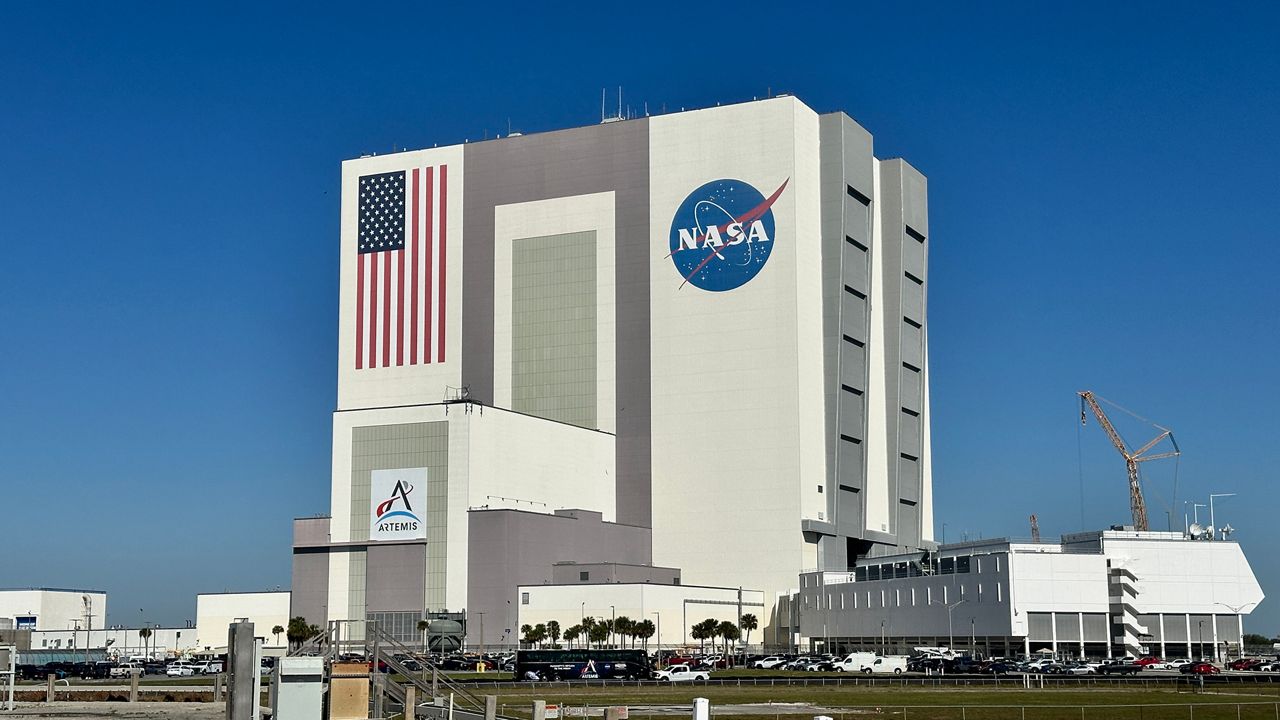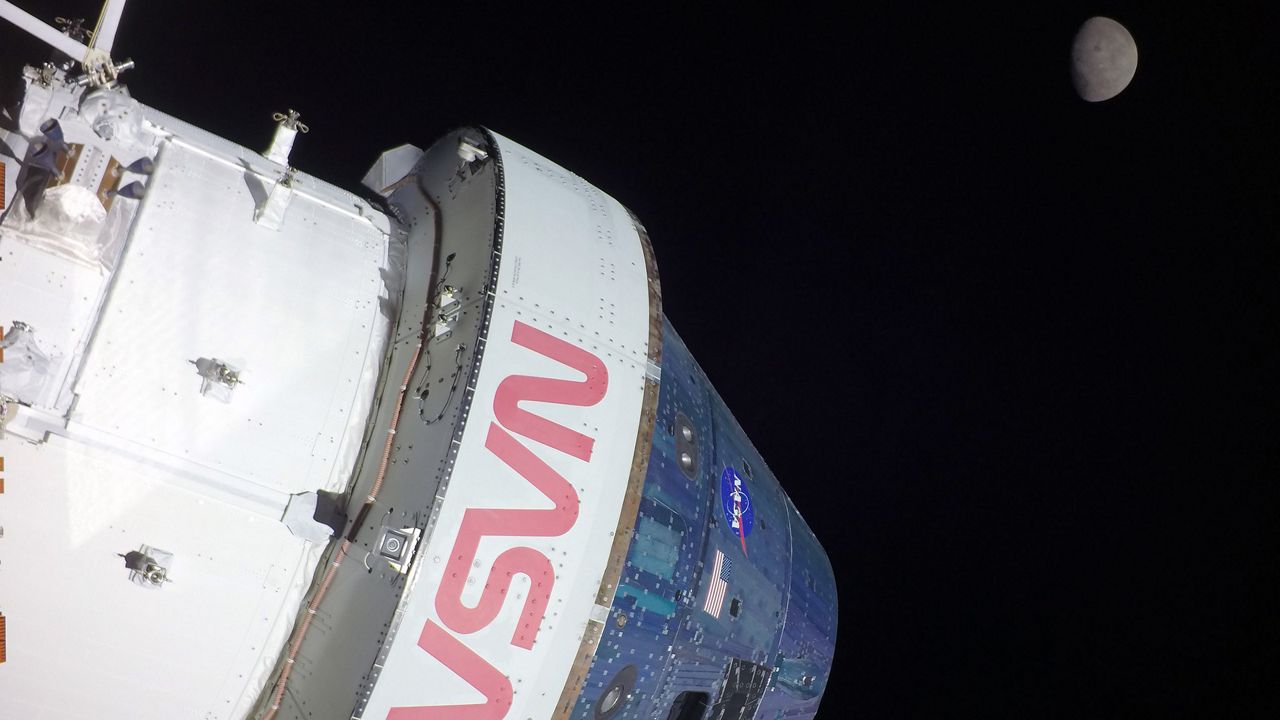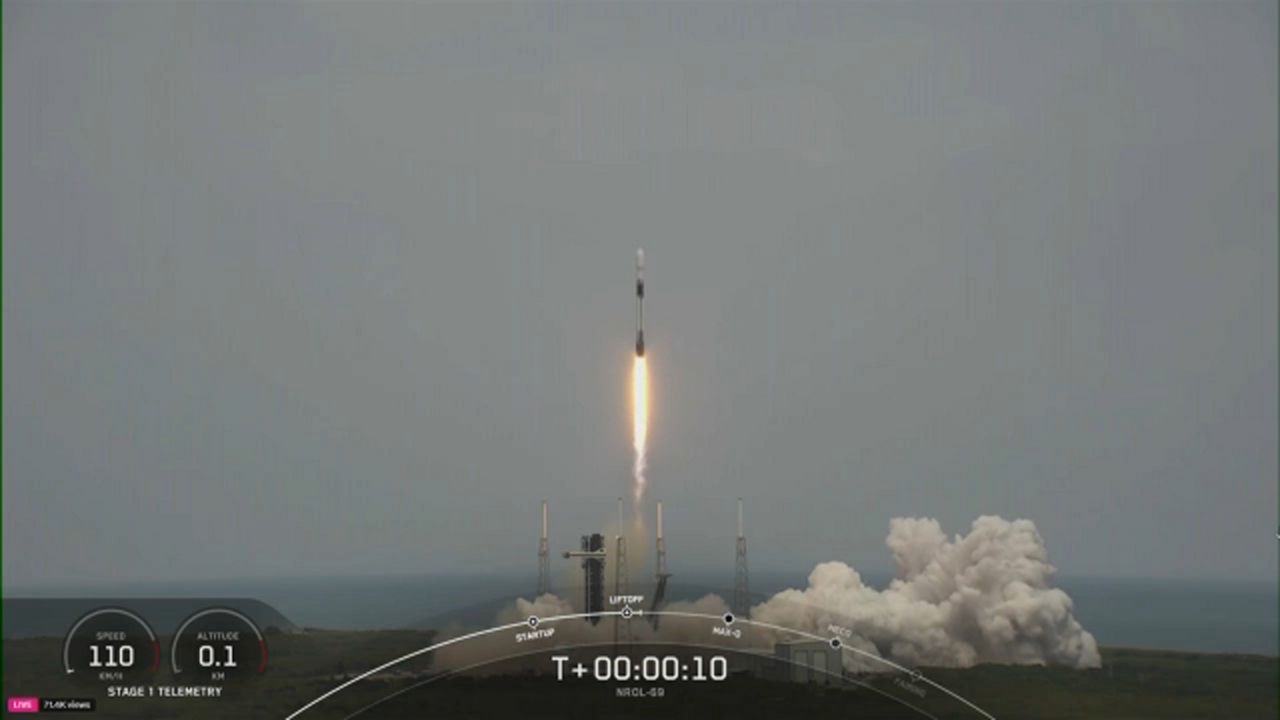BOCA CHICA BEACH, Texas — On Thursday, SpaceX was able to launch its Starship in an uncrewed test; the fourth such test of a spacecraft that many hope will help return humans to the moon.
What You Need To Know
- The launch happened at Starbase in Boca Chica, Texas
- This will be the fourth test for the rocket
- Starship had first burn landing during a flight test; its condition is unknown
- Learn more about the Starship spacecraft and the Super Heavy rocket ▶
- Get more space coverage here ▶
- 🔻Watch SpaceX's history and its future in Florida🔻
Liftoff of Starship! pic.twitter.com/2Z1PdNPYPG
— SpaceX (@SpaceX) June 6, 2024
Countdown to launch
Through a live feed, cheers from the Starship team were heard during liftoff from SpaceX's Starbase facility in Boca Chica, Texas at 8:50 a.m. ET.
Super Heavy is the rocket booster part of the vehicle, while the spacecraft is called Starship. Collectively, they are known as Starship.
After the hot-stage separation, Starship for the second time entered space, once again cheers and shouts of joy were heard. After the separation, the booster successfully had a water landing, as designed, in a soft splashdown in the Gulf of Mexico.
Super Heavy has splashed down in the Gulf of Mexico pic.twitter.com/hIY3Gkq57k
— SpaceX (@SpaceX) June 6, 2024
The California-based company stated this would be a 120-minute test of its Starship. But from launch to landing, it was an hour and six minutes.
After a planned blackout, the SpaceX team was able to re-connect with Starship as it was preparing to re-enter Earth. The ship that can hold 100 people was coming in at more than 11,800 mph (19,000 kmh).
As it was coming in, some heat tiles did come off, according to a SpaceX team member during the live feed.
At one point, a camera mounted on the spacecraft captured a landing flap starting to come apart, as pieces were seeing flying off it. One of the pieces cracked the camera lens.
However, the flap stayed on.
“The question is, how much is the ship is left?” asked a SpaceX team member.
But once Starship reached its landing destination in the Indian Ocean, it did a landing burn and made it through re-entry, a first of its kind during any of the four tests.
It is not known what state the Starship is in and it might be some time until that information is revealed.
But one of the main goals of the fourth test is collecting the data from both the booster rocket and the spacecraft, stated SpaceX, as the data will be used for future tests and eventually Artemis missions.
“All this data is incredibly important, even if the ship breaks up,” said a team member.
SpaceX founder Elon Musk was quite pleased with the fourth test, stating on X, formerly known as Twitter which he owns, "Despite loss of many tiles and a damaged flap, Starship made it all the way to a soft landing in the ocean!"
Despite loss of many tiles and a damaged flap, Starship made it all the way to a soft landing in the ocean!
— Elon Musk (@elonmusk) June 6, 2024
Congratulations @SpaceX team on an epic achievement!! https://t.co/UnXbnmZ2pE
It was originally set to start at 8 a.m. ET. And then on Wednesday night, Musk posted on X that the test would start at 8:20 a.m. ET. No reason was given for why the time changed.
Learning about Starship
The purpose of Starship is to return humans to the moon and, ultimately, send them to Mars. In fact, it will be used for the Artemis III mission.
It is a two-stage heavy-lift launch rocket that will be a fully reusable transportation system to carry humans and cargo into space.
As stated previously, the spacecraft is known as Starship while the rocket booster is called the Super Heavy. When they are stacked together, they are known as Starship.
Both the Super Heavy rocket, with its 33 Raptor engines fueled by thousands of tons of sub-cooled liquid oxygen and liquid methane, and the Starship are designed to be reusable.
Starship is designed to carry 100 people, plus cargo, to low Earth orbit, the moon and Mars, according to the ship’s user guide.
“The crew configuration of Starship includes private cabins, large common areas, centralized storage, solar storm shelters and a viewing gallery,” the six-page guide said.
What to expect for the fourth-test flight
For the fourth test, SpaceX officials said it will build on the three prior launches, and they plan to showcase a series of presentations.
“The fourth flight test turns our focus from achieving orbit to demonstrating the ability to return and reuse Starship and Super Heavy. The primary objectives will be executing a landing burn and soft splashdown in the Gulf of Mexico with the Super Heavy booster, and achieving a controlled entry of Starship,” SpaceX explained.
The Starship spacecraft is planned to have a splashdown in the Indian Ocean, which was a similar trajectory from the last mission.
Since the last flight in March, SpaceX stated it has made software and hardware upgrades to improve the reliability of the spacecraft.
“The SpaceX team will also implement operational changes, including the jettison of the Super Heavy’s hot-stage following boostback to reduce booster mass for the final phase of flight,” stated the company.
Starship’s flight history
With each launch of Starship, SpaceX has seen a measured success for the craft that officials hope will return people to the moon.
The first launch attempt of Starship happened in April 2023, and saw a series of failures that caused the rocket to explode.
The FAA issued a series of conditions before the California-based company could try again, which included 63 corrective actions.
For the second test in November 2023, SpaceX was forced to blow up Starship.
The new stage separation, called hot stage separation, worked as constructed, but it caused the Super Heavy rocket’s destruction.
“Following stage separation, Super Heavy initiated its boostback burn, which sends commands to 13 of the vehicle’s 33 Raptor engines to propel the rocket toward its intended landing location. During this burn, several engines began shutting down before one engine failed energetically, quickly cascading to a rapid unscheduled disassembly of the booster,” SpaceX described.
SpaceX experts said they believed the likely cause of the booster blowing up was a blockage in the filter where liquid oxygen fuel goes to the engines.
Minutes after the hot-stage separation, SpaceX could not retrieve a signal to the Starship spacecraft and was forced to terminate it.
“A leak in the aft section of the spacecraft that developed when the liquid oxygen vent was initiated resulted in a combustion event and subsequent fires that led to a loss of communication between the spacecraft’s flight computers. This resulted in a commanded shut down of all six engines prior to completion of the ascent burn, followed by the Autonomous Flight Safety System detecting a mission rule violation and activating the flight termination system, leading to vehicle breakup,” the company explained.
SpaceX stated it fixed 17 corrective actions that took place during the second flight attempt.
The third test took place in March 2024, and while it was not a 100% successful mission, SpaceX checked off a number of accomplishments, such as:
- All Raptor engines lighting up
- A completed a propellant transfer demonstration
- The second time the hot stage separation worked
- The craft's heat shield being intact
- The payload doors, known as Pez door, worked
- The first time Starship was in space
- The longest Starship test so far
But as stated, it was not a fully successful mission. While 13 of the 33 Raptor engines of the Super Heavy lit up as designed following a stage separation, six of the lit engines shut down, which triggered an early boost-back shutdown.
Since 13 engines were needed for the landing of the Super Heavy booster and only six shut down, that left seven, but only two could reach mainstage ignition and the booster did not survive the landing.
But SpaceX believes the cause of the issue was the continued filter blockage of the liquid oxygen that goes to the engines, the same incident that happened in the first test flight.
For the Starship spacecraft itself, it was mostly functioning until 49 minutes into its mission.
“Several minutes after Starship began its coast phase, the vehicle began losing the ability to control its attitude. Starship continued flying its nominal trajectory but given the loss of attitude control, the vehicle automatically triggered a pre-planned command to skip its planned on-orbit relight of a single Raptor engine,” SpaceX explained.
While Starship was finally in space for the first time and providing important data to the SpaceX team, the lack of attitude control resulted in its final destruction.
“The most likely root cause of the unplanned roll was determined to be clogging of the valves responsible for roll control. SpaceX has since added additional roll control thrusters on upcoming Starships to improve attitude control redundancy and upgraded hardware for improved resilience to blockage,” stated SpaceX.
For this latest mission, additional thrusters were added to Starship to prevent it from rolling, which lead to its predecessor’s destruction in test three.
Spectrum News reporter Greg Pallone breaks down the history of Starship and SpaceX's plans for it in Florida.









